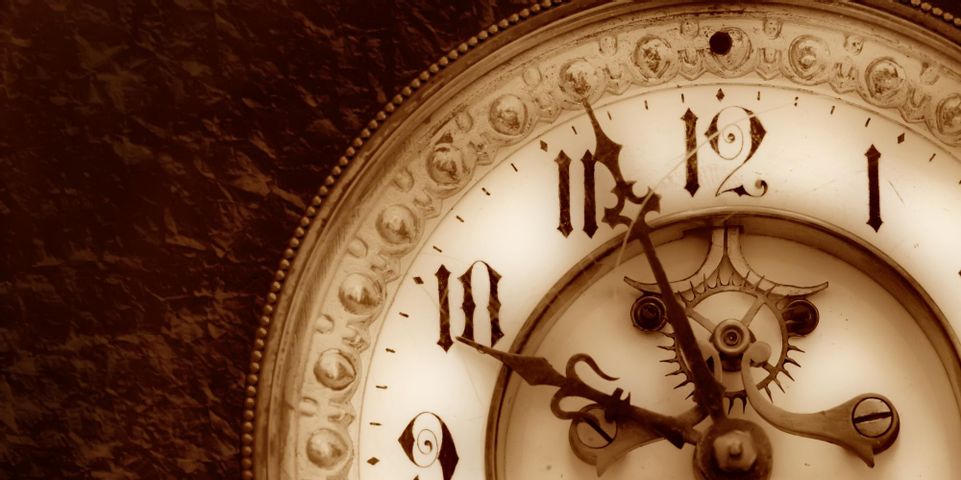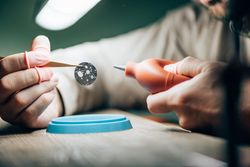
Your vintage wall clock is a precious belonging and one that needs special care to keep working wonderfully for years to come. Learn about how to clean your antique clock in the guide below.
Steps to Clean a Vintage Clock
Oiling & Cleaning the Exterior
Work in a well-lighted area and use lint-free cloths and soft-bristled brushes to clean the clock. To clean the outside, dust with the lint-free cloth, or if the case is very dirty, use a cleaner made especially for clocks. Do not use metal polish or attempt to refinish a wooden clock case (this can affect the antique value).
To oil the faceplate of the clock, spot clean the pivot points with a purpose-built tool or the sharp end of a wooden skewer to clear away dried oil and dirt. Be careful not to brush dislodged pieces down into the gears or clock movement. Avoid using cotton swabs as they will leave fibers behind. Once these pivot points are clean, you can reapply clock oil into the oil sinks at the pivot points on the front and the back of the faceplate. Wipe off any oil that bulges over the edge of the oil sink.
Cleaning the Movement
 You should only take apart your clock if you feel confident to do so; otherwise, use a clock repair service. To clean the gears of your vintage wall clock, you will need to dismantle the movement and soak each piece in a tray of suitable cleaning fluid (check with a local clock repair shop for suggestions). Clean each part with the soft-bristle brush. Clean out all areas with sharp peg wood or wooden skewers. Wipe the teeth of the gears with pith wood and a lint-free rag. Clean the clock face, dry it, and be sure to wipe away any accumulated oil or grime. Reassemble the movement. This intensive type of oiling and cleaning of the gears and movement only needs to be done every four to five years.
You should only take apart your clock if you feel confident to do so; otherwise, use a clock repair service. To clean the gears of your vintage wall clock, you will need to dismantle the movement and soak each piece in a tray of suitable cleaning fluid (check with a local clock repair shop for suggestions). Clean each part with the soft-bristle brush. Clean out all areas with sharp peg wood or wooden skewers. Wipe the teeth of the gears with pith wood and a lint-free rag. Clean the clock face, dry it, and be sure to wipe away any accumulated oil or grime. Reassemble the movement. This intensive type of oiling and cleaning of the gears and movement only needs to be done every four to five years.
Setting & Positioning
Vintage clocks should not be placed on or above a heat source, in direct sunlight, or where children or animals might accidentally damage them. A wall clock should be securely screwed into a mount or wall stud; make sure it is level as well so that it can stay “in beat.” Do not hang a wall clock on a nail, string, or picture rail. To set the clock, use the correct key and only wind it to the first point of resistance. Try to wind the clock on the same day each week. To adjust the hands, turn them gently clockwise.
For expert repair and service of vintage wall clocks and grandfather clocks in southern Ohio, choose the Tic Toc Shop, based in Mason. This professional and long-standing clock repair shop was established in 1963 and can work with any antique or new clock. Call (513) 398-1474 to request a house call, or visit the website to see a full range of services.
About the Business
(10 reviews)
Have a question? Ask the experts!
Send your question

